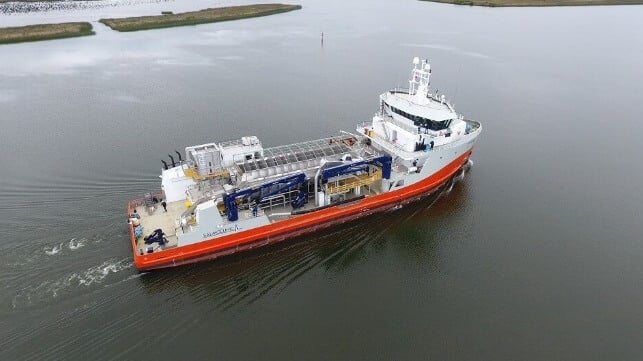Video: World's First Salmon-Treatment Vessel in Action

Chile's Asenav Shipyard has delivered the world's first salmon treatment vessel. The newly-commissioned Owurkan is the first vessel purpose built for treating common aquaculture pests and diseases, like sea lice.
The vessel was built at Asenav's yard in Valdivia, Chile, and delivered last year. The central feature of the treatment machinery - a 300 cubic meter helix tank - was constructed in the Netherlands and shipped over on a freighter. On arrival in Chile, the tank was lifted directly onto the deck of the Owurkan for installation.
The Owurkan is the product of more than six years of research and development. The vessel's owner and operator, SalmoClinic, has developed a proprietary continuous bath process that allows the controlled use of treatment products authorized for application in fish, without affecting the environment. By means of a degradation process that removes residual organic compounds, the system prevents the medications from entering the sea.
"One of the critical features of the vessel is reducing the use of pesticides or anti-parasites that today are used massively without adequate environmental control. This vessel takes care of the products used and does not impact the surroundings," says Germán Schacht, head of business development for Asenav. "This is the first vessel built worldwide for this specific purpose, and is expected to revolutionize the industry."

that matters most
Get the latest maritime news delivered to your inbox daily.
The vessel is also fitted with a large reverse osmosis plant to make up to 125 cubic meters per hour of the fresh water needed for some treatments, as well as a continuous filtration system to remove sea lice from the bath.
The Owurkan will operate primarily in Chile's X and XI salmon-farming regions, depending upon where its services are needed most. SalmoClinic expects that five or more vessels may be needed to satisfy the needs of the Chilean market, and it may expand overseas to other salmon-farming regions. The company is also considering a land-based version of its treatment technology for use at hatcheries.
